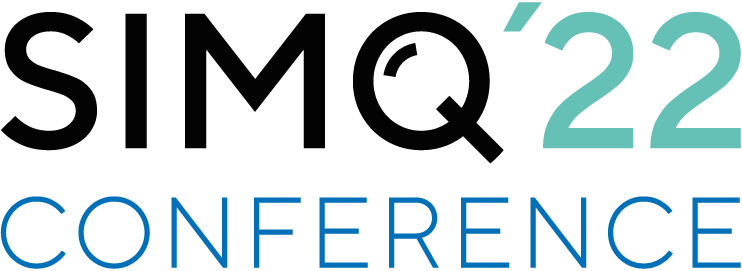
Imagine a future where surgeries are planned and executed virtually before a single incision is made. A future where medications are tested for efficacy on your digital mirror image to ensure the best possible treatment for you without any guesswork. And where illnesses are discovered before developing in a human’s body.
This is not a science-fiction movie script or just a concept; it’s becoming a reality with Digital Twin Technology in Healthcare, a technology destined to reshape healthcare and elevate the industry to new heights. Simq is a trailblazing force in the field of digital twins for healthcare.
The Healthcare Sector Enters Virtual Reality
At their core, digital twins in healthcare are sophisticated virtual models of physical entities such as machines and biological organisms. These models, built on large amounts of real-world data, are not just static replicas; they dynamically evolve with their real-life counterparts.
Business sectors like automotive and aerospace have already implemented digital twins for various applications on the way to Industry 4.0. Companies implementing digital twins benefit from new risk assessment methods, reduced production downtime, and improved product quality.
While improving customer experience, these companies also reach higher levels of profitability through cost-reduction and efficiency enhancements.
However, in healthcare, digital twins represent a relatively new intersection of technology and medicine. The market sector has a vast potential that remains untapped.
With the digital twins market in healthcare projected to grow from $1.6 billion in 2023 to $21 billion by 2028, we are on the brink of a healthcare transformation [1].
In this blog, we review the impact of digital twins on the landscape of modern-day healthcare. From personalized patient care to enhancing surgical precision with tools like Simq’s advanced medical simulation software solutions, the impact of digital twins is profound and far-reaching.
Read along as we explore this promising technology, its applications, and how it sets new medical treatment and research standards.
The Benefits of Digital Twins in the Healthcare Sector
Digital twins offer benefits like personalized patient care, improved diagnosis accuracy, and optimized treatment plans. Detailed patient data is required to create a digital twin modeled using advanced simulation software.
Simq provides solutions to develop and utilize digital twins effectively, addressing challenges like data complexity and ensuring accurate simulations.
Digital twins also enable remote monitoring and improved patient engagement. Patients can actively engage with their digital twin to learn about their health, track progress, and make informed decisions, leading to improved adherence to treatment plans and better health outcomes.
This individualized approach ensures high treatment efficiency and reduced patient risk, ultimately contributing to positive results and improved quality of life.
Digital twins also empower healthcare providers to gather and analyze a wealth of patient data, leading to accurate diagnoses, real-time patient monitoring, and proactive intervention to prevent adverse events. Simq’s Virtual Patient Cohort is an excellent example of how statistical data can be leveraged in combination with physics based simulations to optimize product families.
Overall, the use of digital twins in medicine holds tremendous promise for transforming health delivery, optimizing patient monitoring, and revolutionizing patient care, ultimately leading to improved health outcomes.
The State-of-the-Art in the Field of Digital Twins in Healthcare
In the healthcare industry, a digital twin is a virtual representation of a physical entity that can be a part of a living being, such as a human organ, tissue, or bone. The difficulty of correctly imaging the human body parts is higher for organs than soft tissues.
Solid parts, like teeth and bones, require less computational effort because of the higher predictability regarding substance properties.
A vital discipline is biomechanical science, where, among other things, finite element methods are applied to determine the correlations between muscle strain and muscle deformation.
Digital twins are modeled using real-world data and can simulate physiological processes, enabling personalized healthcare interventions.
Currently, digital twins are used for various purposes, including simulating organ functions, planning surgeries, and modeling disease progressions.
The roadmap for a complete human body digital twin involves integrating various physiological systems into a cohesive model that has not been achieved yet.
This comprehensive digital twin would provide unparalleled insights but faces challenges due to the complexity of human biology and the need for extensive data integration.
The Simq Platform gives healthcare software for in silico medicine and sophisticated medical simulations a user-friendly interface, making the whole process cost-effective through modern cloud technology.
Digital Twins in Diagnostic and Treatment Planning
Simq OSA software utilizes digital twins to diagnose Obstructive Sleep Apnea objectively, enabling precise analysis of airway obstructions for personalized treatment of the life-threatening condition over 900 million adults suffer from globally.
Simq Virtual Implant Testing (VIT) software allows custom jaw implant creation, enhancing dental procedures’ safety and effectiveness through precise, patient-specific planning.
The Medartis success story with Simq involves using finite element analysis (FEA) to enhance the safety and effectiveness of osteosynthesis products for mandibular fractures.
Collaborating with the University Hospital Marburg and Prof. Neff, Medartis utilized Simq VIT software. The project aimed to prove the clinical performance and safety of their osteosynthesis implants, especially in post-market surveillance.
Using simulation in medical technology allowed Medartis to test and validate its products in patient-specific situations, thereby ensuring quality and safety.
This example highlights the utility of simulations in improving continuous post-market surveillance of medical devices and objectively evaluating clinical findings.
Enhancing Surgical Precision and Personalized Care
Simq OSP software employs digital twins in surgical planning, improving precision and reducing risks. Additionally, Simq’s technology in Rapid Palatal Expansion (RPE) uses digital twins to achieve balanced facial symmetry, exemplifying the role of digital twins in providing personalized surgical outcomes.
The KLS Martin Group’s success story with Simq involves their innovative approach to Rapid Palatal Expansion (RPE), a procedure where the risk of asymmetric facial widening is significant.
Simq’s simulation-based optimization was crucial in supporting the surgical incision, significantly reducing the risk of asymmetric outcomes.
Using patient-specific simulative surgical planning, they could provide suggestions for osteotomy guidance and create a suitable drill and marking guide. This ensured symmetrical facial shapes post-treatment, significantly advancing orthodontic procedures.
Simq’s patented simulation-based planning was essential in optimizing the surgical expansion of the maxilla, minimizing trauma, and virtually eliminating the risk of asymmetrical openings.
This partnership highlights Simq’s capability to enhance patient-specific surgical procedures, thereby ensuring safer and more predictable outcomes in orthodontics.
Advancements in Medical Device Development and Treatment Optimization
Simq AAA software demonstrates how digital twins assist in assessing and planning treatment for Abdominal Aortic Aneurysms. This technology offers precise modeling of the aorta, enabling healthcare professionals to evaluate aneurysm risks and personalize treatment strategies effectively.
Simq’s approach to medical device development and post-market surveillance also demonstrates the transformative impact of digital twins, particularly in ensuring device safety and efficacy.
This advancement exemplifies how digital twins can significantly enhance medical research, device development, and ongoing monitoring in healthcare.
In medical device design, Simq’s contributions to medical device approval showcase how digital twins can improve and accelerate the development process and post-market surveillance.
Swiss Dental Solutions (SDS) collaborated with Simq to utilize Finite Element Method (FEM) analysis in the FDA approval process for their ceramic dental implants.
This collaboration enabled SDS to quickly respond to the FDA’s request for additional testing on implant variants.
By employing numerical simulation methods, SDS could simulate the fatigue behavior of these variants, ensuring they met the necessary safety standards without the need for time-consuming physical testing.
This innovative approach led to a successful and timely market approval in the U.S., demonstrating the effectiveness of Simq’s digital simulation solutions in the regulatory approval process for medical devices.
The Best Time to Start with Digital Twins is Today!
Digital twin technology marks a shift in healthcare, offering enhanced patient care through personalized treatment plans and surgical precision.
As the healthcare landscape evolves, these technologies stand at the forefront, initiating a new era of innovation and patient-centric care.
To gain a deeper understanding of these revolutionary technologies, we highly recommend visiting the Simq website. There, you can explore a plethora of valuable information about our products and customer success stories.
Transform your business with digital twins in healthcare.





